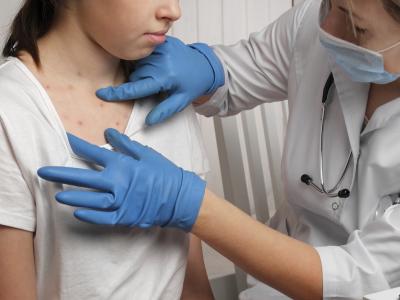Diagnostic stewardship tied to fewer urine culture orders, hospital UTIs
A diagnostic stewardship program at a large Los Angeles hospital was associated with significantly reduced inpatient urine culture orders and rates of hospital-acquired catheter-associated urinary tract infections (CAUTIs), researchers reported today in Clinical Infectious Diseases.
The stewardship program was implemented by clinicians at the Los Angeles County + University of Southern California (LAC + USC) Medical Center after they conducted a review of all CAUTI cases and found that almost half of the positive urine cultures that triggered mandatory national CAUTI reporting were obtained as part of routine hospital-onset fever workup, rather than because the patient had signs or symptoms of an infection. The intervention involved a hospital-wide memo that educated providers on the overuse of urine culture testing and described criteria for appropriate inpatient urine culture ordering, along with monthly audit and feedback of urine culture orders.
To assess the impact of the program, researchers at LAC + USC Medical Center compared inpatient urine culture orders and the CAUTI standardized infection ratio (SIR) in the baseline period (January 2018 to January 2019) and the period after implementation of the diagnostic stewardship intervention (March 2019 to January 2020).
The results showed that inpatient urine culture orders dropped from an average of 509 per month in the baseline period to 280 per month after implementation, and the corresponding CAUTI SIR fell dramatically. There were no significant changes in the hospital's observed mortality for all patients or those patients with urinary tract infections, indicating that the intervention was not associated with any detectable patient harm. In addition, the reduction in urine cultures led to a projected lab expenditure reduction of $920 to $3,910 per month.
"We plan to continue measuring and sharing our hospital CAUTI SIR monthly, educating providers in grand rounds yearly, and educating nurse champions at our monthly CAUTI committee meeting," the authors write.
Oct 6 Clin Infect Dis abstract
Peer comparison linked to reduced antibiotic prescribing at VA hospital
A peer comparison–based antibiotic stewardship intervention at a Veterans Affairs (VA) emergency department (ED) was associated with reductions in overall and unnecessary oral antibiotic prescribing, researchers reported yesterday in Antimicrobial Agents and Chemotherapy.
In a prospective, observational cohort study, researchers with the VA Pittsburgh Healthcare System and the University of Pittsburgh evaluated oral antibiotic prescribing by ED physicians at the VA Pittsburgh Healthcare System before and after implementation of a peer comparison stewardship intervention.
The intervention involved staff education and emails sent to each ED clinician that compared their antibiotic prescribing rate to that of their peers. The peer comparison intervention was conducted from January 2018 through June 2018, and the study compared oral antibiotic prescriptions during that period with prescriptions during the baseline period (June 2016 through December 2017).
During the intervention period, antibiotic prescriptions decreased monthly by 10.4 prescriptions per 1,000 ED visits (P = 0.07), and the relative decrease in the trend of antibiotic prescriptions during the intervention period compared to baseline was 9.9 prescriptions per 1,000 ED visits per month (P = 0.07). The intervention was associated with a significant decrease in monthly amoxicillin-clavulanate and increase in cephalexin prescriptions. Also, decreasing trends in ciprofloxacin prescriptions during the baseline period were maintained during the intervention.
Unnecessary antibiotic prescribing decreased from 55.6% to 38.7% (a 30.4% decrease, P = 0.003) during the intervention, while optimal prescribing increased from 21.6% to 29.3% (a 35.8% increase, P = 0.12).
The authors note that while the intervention was associated with decreased overall and unnecessary antibiotic prescribing, rates of unnecessary prescribing remained high, and increases in the optimal prescribing did not reach statistical significance.
"These findings suggest that additional interventions beyond education and peer comparison may be needed in EDs to decrease rates of inappropriate antibiotic prescribing," they wrote.
Oct 5 Antimicrob Agents Chemother abstract













